Rare
Perilous Professions of the 20th Century
Published
11 months agoon
The phrase “it’s a dirty job but somebody’s got to do it” can be applied to the dangerous and death-defying jobs of the 20th century that we have documented here. People have always prioritized providing for their families, even if it meant entering professions that exposed them to daily risks. Throughout history, both men and women have embraced challenges to achieve greatness. Whether they were involved in constructing the Eiffel Tower or inventing groundbreaking products that have transformed our lives today, they persevered through difficult situations and emerged as better individuals. How would you have fared in these hazardous jobs of the 20th century? Let’s keep moving forward.
Jet fighters embrace the wild life

Pinterest
The idea of being a jet fighter pilot is often associated with an exhilarating adrenaline rush, largely thanks to Tom Cruise’s portrayal. However, this profession comes with genuine dangers. Surprisingly, the most perilous aspect is not enemy fire, as one might assume. Instead, the act of ejecting from a plane carries a one-in-ten chance of fatality, and injuries are almost guaranteed. Due to the need for ample fuel and limited carrying capacity, pilots must refuel midair, which introduces another risk: bird collisions. Moving at high speeds, hitting a bird can have serious consequences. While death is unlikely, the pilot may sustain injuries from the impact.
Two workers marvel at their accomplishments from 1,000 feet in the air on the Empire State Building

Pinterest
The construction of the Empire State Building involved a team of 3,400 brave men, who were not afraid of heights. Among them were workers of European descent and Mohawk workers. The Mohawk workers were particularly fearless while working at such great heights. The construction of this iconic 86-story building began on March 17, 1930, and was completed on May 1, 1931. Although it held the record for being the tallest building in the world for a while, working on its construction posed a significant risk of falling to one’s death. Surprisingly, official records indicate that only five workers lost their lives during its construction. The extensive collection of photographs taken during the construction allows those of us who are not willing to climb to such heights to get a glimpse of what the workers must have experienced.
Sailors aboard the Garthsnaid redefine the notion of being ‘sea sick
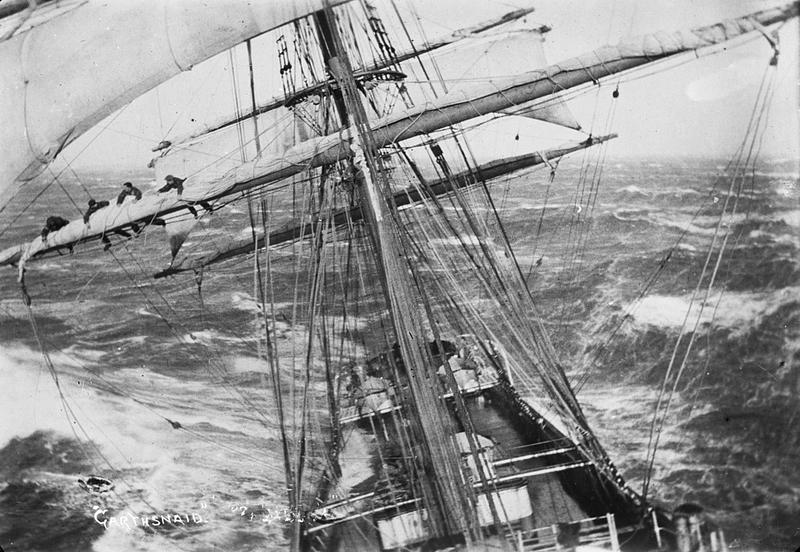
Pinterest
Sailing is considered one of the more perilous sports, and the risks extend to working on a sailing ship as well. The dangers are quite evident, especially when encountering harsh weather conditions. The constant movement of the sailboat poses a risk of falling overboard, but there is also a potential for injury from falling within the boat itself. Moreover, as the ship sways, there is a possibility that an unsecured heavy object could become dislodged and strike a passenger. Although most sailing fatalities result from drowning, it is worth noting that many of these deaths could have been prevented if the individuals had worn lifejackets.
Looking Good is Essential When Painting the Eiffel Tower
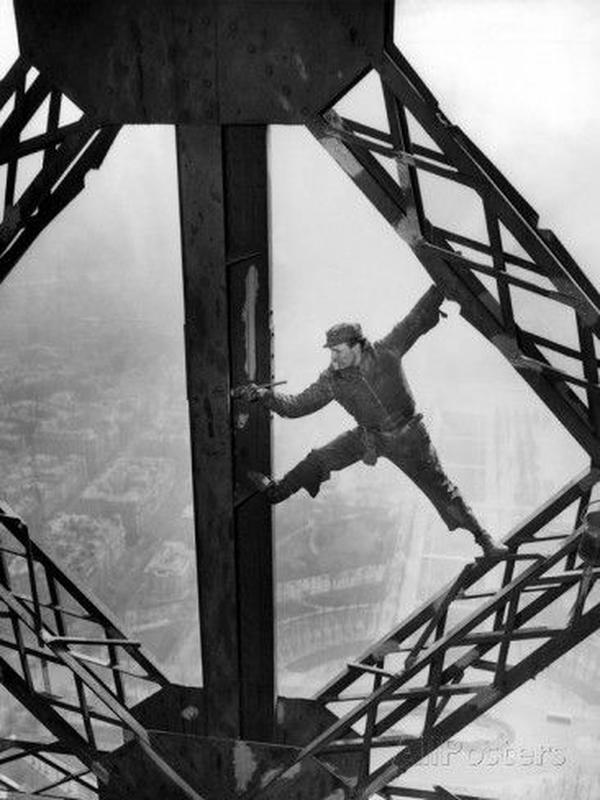
Pinterest
When it first opened in 1889, the Eiffel Tower had a reddish-brown hue. However, a decade later, in order to keep up with the latest fashion, it underwent a transformation and was painted yellow. Over the years, it has gone through several color changes before settling on its current shade known as Eiffel Tower Brown, which it has proudly displayed since 1968. To make sure it stands out against the backdrop of the sky, the tower is painted in progressively lighter shades, consisting of three different tones. Unlike bridges that are painted for the purpose of protection against rust and corrosion, the Eiffel Tower’s painting routine is aimed at maintaining its youthful and captivating beauty. Every seven years, a massive 60 tons of paint is meticulously applied to the structure. However, this task, like many others associated with the tower, is fraught with danger due to its towering height.
Avoiding Carcinoma Was a Stroke of Luck for Chimney Sweeps
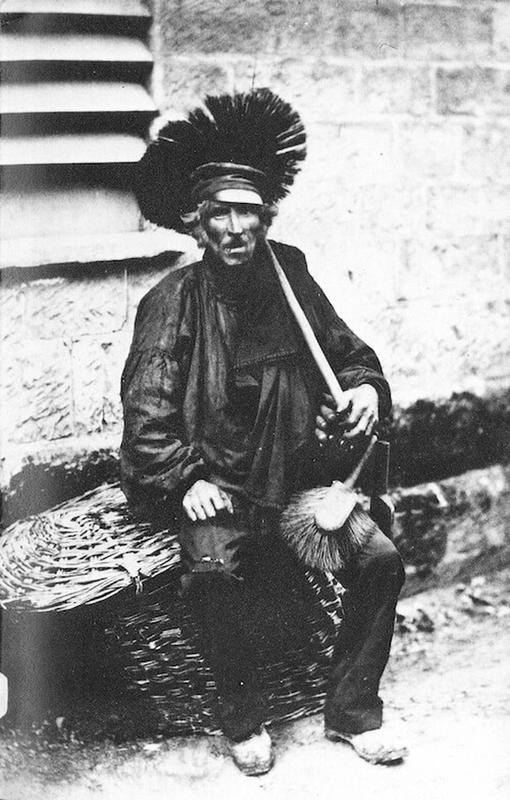
Google
Although it is enchanting to imagine Santa Claus sliding down every chimney in December, the profession of a chimney sweep lacks the same level of charm. The term “chimney sweep” brings to mind images of faces covered in soot, but this job entails more hazards than just dirty skin. Inhaling soot poses a constant respiratory risk, potentially leading to illnesses and infections. Moreover, coming into direct contact with soot can result in skin irritations, rashes, and infections. Additionally, exposure to creosote can cause visual impairments due to chemical burns. Nonetheless, chimney sweeps continue to play a vital role today, albeit with proper training and safety measures in place.
Man at Risk of Mercury Poisoning in 1938 Hat Manufacturing Job Due to Lack of Protective Gear
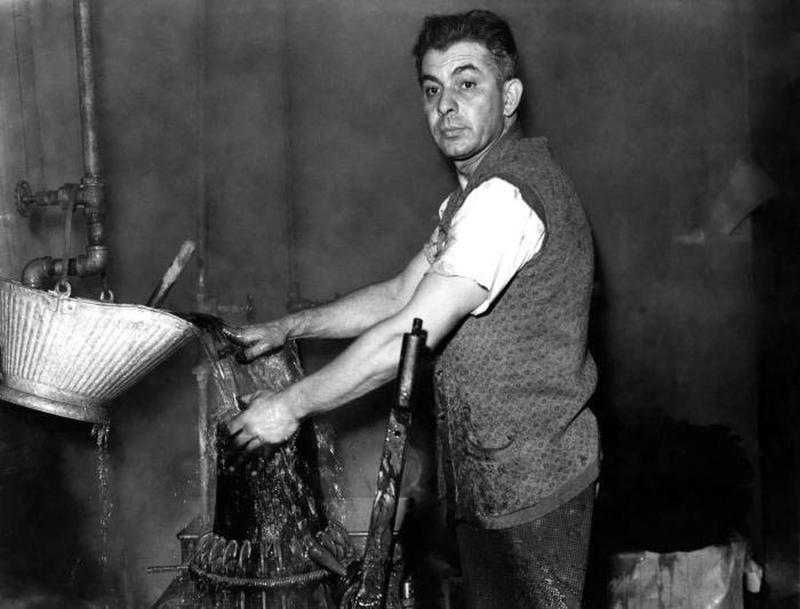
Google
Despite the perception of hat-making as a safe occupation, it surprisingly proved to be quite perilous. Hatters engaged in a technique known as carroting, which involved washing felt using a solution infused with mercury nitrate. Consequently, these workers were exposed to the toxic mercury vapors present in the air. Mercury, notorious for its harmful effects on the nervous system, would result in mercury poisoning, exhibiting symptoms such as drooling, hair loss, twitching, and impaired cognitive abilities. In severe cases, victims even experienced hallucinations. It was not until 1941 that the United States eventually prohibited the utilization of mercury in felt manufacturing.
Brave Men Required to Cut Down Redwoods in the Early 1900s

Pinterest
Redwood trees, known for their immense size and age, are among the largest and oldest organisms on our planet. Apart from their resistance to decay and ability to withstand fires, these trees have been highly valued for their wood. This demand for redwood timber significantly increased following the 1906 earthquake that caused extensive damage to San Francisco. The most coveted part of the tree, however, was also the most challenging to obtain: the top. In the early days, loggers would erect scaffolds and insert boards into the tree’s sides to create a stable platform for cutting. Once the tree was felled, the bucker would remove the branches and divide the tree into more manageable sections. Subsequently, the peeler would meticulously strip off the bark. Although the tools they employed were hazardous, the immense size of the trees further amplified the risks involved in this laborious process.
What did you do today while a Navy SEAL was boarding a ship?
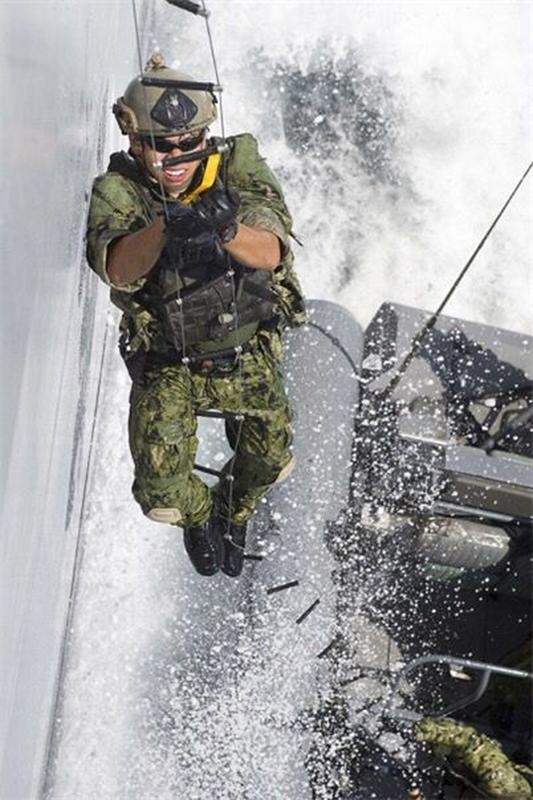
Pinterest
The Navy SEALs are the primary special operations force of the Navy. In order to become a SEAL, candidates must undergo intense physical training and successfully pass a challenging physical test. Their duties involve confronting hazardous situations such as combating piracy, terrorism, and other threats by boarding ships. During this process, they adhere to visit, board, search, and seizure protocol, and employ a three-wave rappelling strategy for boarding. The initial wave is responsible for providing cover fire to safeguard the following waves. Additionally, they are tasked with safeguarding the boat’s perimeter using helicopters and boats. These measures are necessary to ensure the safety of the SEALs as they execute their missions, as they face significant risks from enemy fire.
If a tree falls in the forest, does it make a sound?
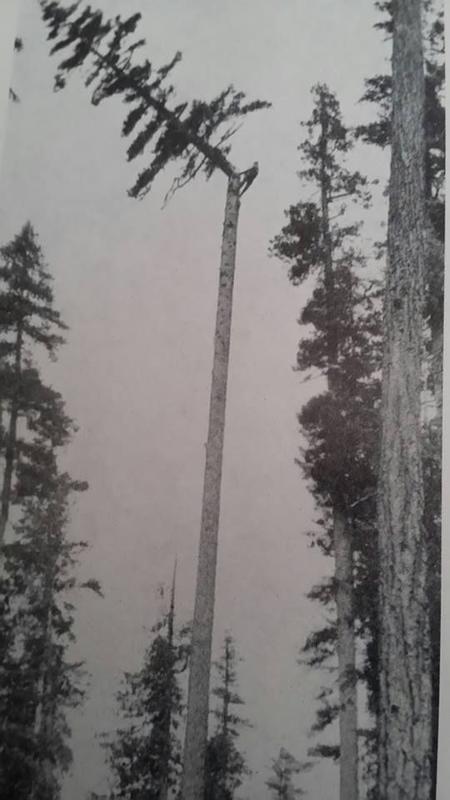
Pinterest
There are several reasons for tree trimming, ranging from concerns about their proximity to power lines to the well-being of the tree. Trimming trees should be done using proper techniques, as there are hidden dangers involved. Tree trimmers face the risk of being struck by falling branches and injuring themselves with their tools. Improper trimming can weaken the tree, making it susceptible to branch breakage or even complete collapse, despite its initial appearance of strength.
The most perilous aspect of constructing San Francisco’s Golden Gate Bridge wasn’t its heights
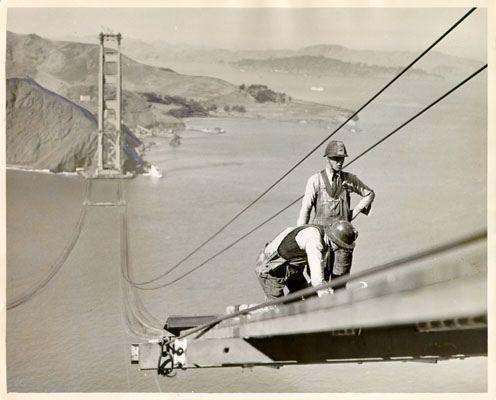
Pinterest
During times of extreme desperation, such as the Great Depression, individuals often resort to taking on risky employment opportunities. This was the case in 1933 when construction commenced on the Golden Gate Bridge, a remarkable engineering feat of the 20th Century. Despite the adverse conditions of cold, dampness, and frequent strong winds, workers persevered in the project. They faced cramped and enclosed workspaces, necessitating the use of respirators to shield themselves from the hazardous fumes generated by the installation of lead-based rivets. Additionally, they were exposed to the risks of inhaling the toxic fumes emanating from the lead-based paint utilized to protect the bridge from corrosion. To mitigate the dangers of falling, a safety net was implemented, resulting in only one fatality until February 1937. Tragically, during this time, scaffolding collapsed, creating a hole in the safety net, which led to the loss of ten lives.
Charles Clyde Ebbets, the daring photographer, puts his life on the line to capture the flawless shot
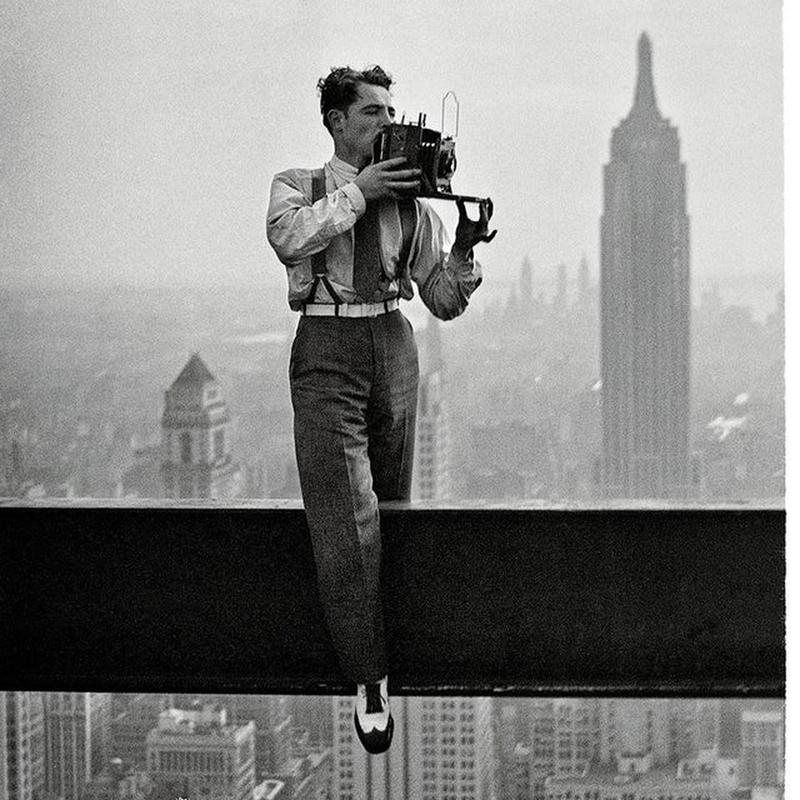
Pinterest
Clyde Ebbets, a renowned photographer, earned recognition for his work published in prominent newspapers. One of his most iconic photographs, titled “Lunch Atop a Skyscraper,” was captured in 1932 on the 69th floor of the under-construction RCA building. This image, depicting eleven men casually perched on a girder with their legs dangling, achieved global circulation. Later on, Ebbets relocated to Florida, where he focused on capturing images showcasing the state’s thriving tourism industry. He documented the aftermath of the devastating 1935 Labor Day hurricane that wreaked havoc on the Keys and was also granted permission to photograph the Sacred Green Corn Dance of the Seminole Indians. Unfortunately, Ebbets suffered a back injury while photographing in the Everglades.
Workers Serenade Construction of Rockefeller Center Skyscraper in New York City, 1932 with Harmonica Melodies
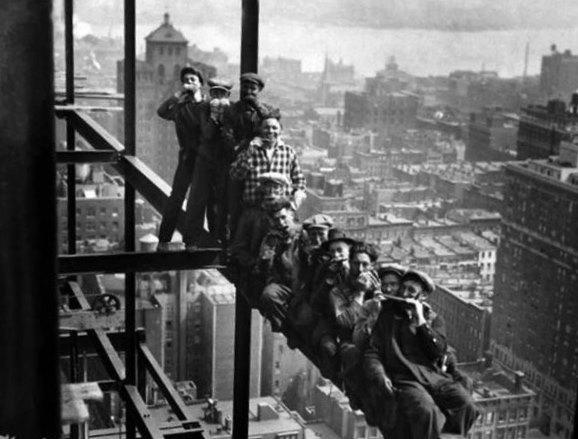
Pinterest
Working at such great heights can be extremely stressful. The construction process of a skyscraper brings about numerous logistical challenges. While some queries have simple solutions, others are more complex. An example of the latter can be seen in an iconic photograph capturing workers on the RCA building construction site, where they can be seen having their lunch in mid-air. Additionally, finding ways to alleviate stress becomes crucial. In this particular case, a group of workers decided to take a break, sit back, relax, and enjoy the breathtaking views of Manhattan while playing harmonicas on a steel girder.
Performing or watching, horse diving requires a brave heart.
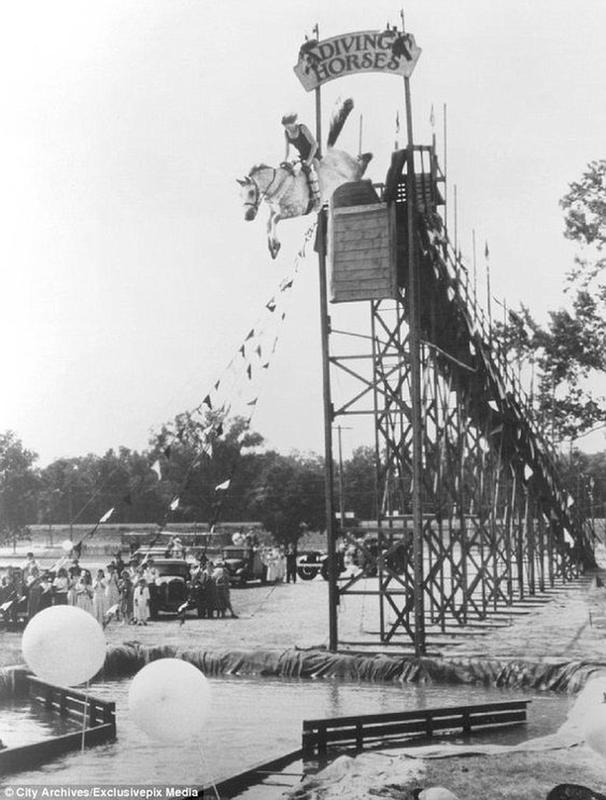
Pinterest
The aforementioned dangerous jobs, which are essential for survival in a civilized world, are distinct from dangerous jobs pursued solely for entertainment purposes. Back in the middle of the 20th Century, at Steel Pier in New Jersey, both men and women would perform a daring act of diving from horses into the water below the pier, ranging from heights of 40 to 60 feet. Although there were no reported fatalities, a few injuries did occur, predominantly broken bones from working with the animals. However, there was one peculiar incident in 1931 when a rider named Sonora Carver went blind after entering the water with her eyes open. Nevertheless, she remarkably continued to perform and lived until the age of 99.
October 1983 Marks the Final Day of Work for Bethlehem Steel Workers
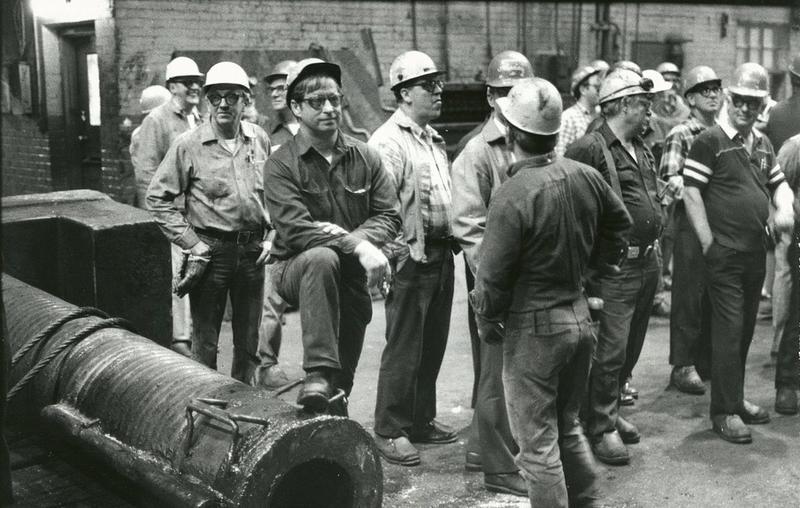
Pinterest
In today’s era, we have become acutely aware of the hazards associated with asbestos in housing products. To avoid any potential risk of exposure, we now enlist the services of contractors to eradicate it from our homes. Unfortunately, steel workers, who were already engaged in perilous occupations, were unknowingly subjected to this carcinogenic substance. Asbestos, a mineral naturally present in soil and rocks, poses a threat when released into the air and subsequently inhaled, leading to the development of lung cancer. Within the steel mills, asbestos served as an insulator for machinery and equipment, was incorporated into protective clothing, and even featured in certain building materials like tiles used for the mills themselves.
Race car drivers in the 1940s risked death with every lap on the track as they resorted to cheating
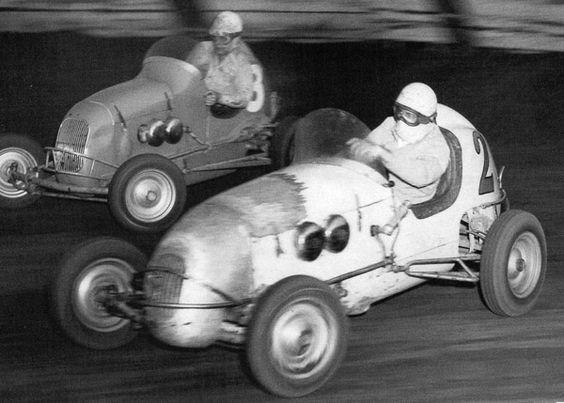
Pinterest
Many individuals understand the risks associated with driving a car at 180 mph, primarily the dramatic and inevitable possibility of crashing. However, there exist additional dangers that are not immediately apparent. One such peril is the potential exposure to hazardous levels of carbon monoxide for drivers. Additionally, due to the extensive periods of sitting without movement, there is an increased risk of blood clots forming within their bodies. It is worth noting that midget cars pose a particularly significant threat. Despite their diminutive size, weighing a mere 900 pounds, they possess remarkable power, reaching up to 400 horsepower. To enhance their safety, these vehicles now come equipped with full roll cages as well as various other safety features.
John F. Kennedy Engaging with Coal Country during 1960 Campaign
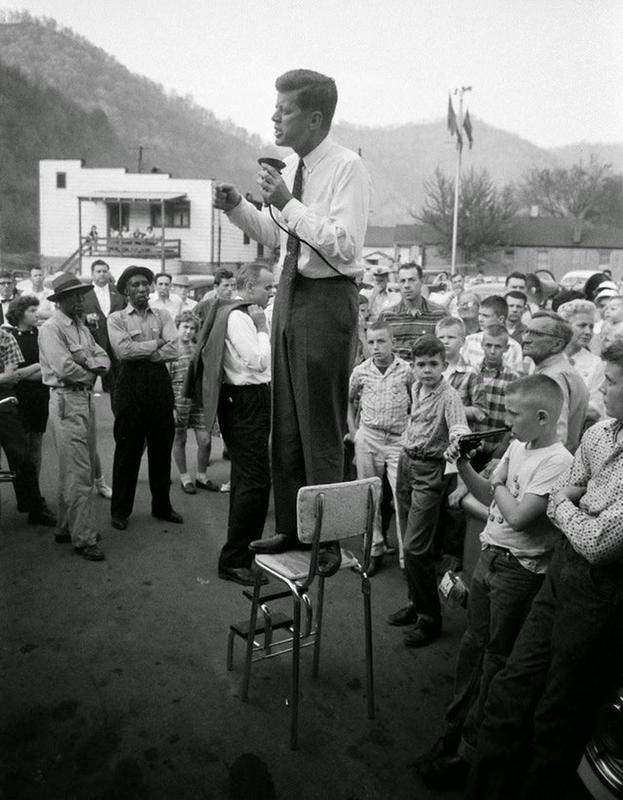
Pinterest
When asked about the most perilous occupation, many individuals would likely mention professions such as firefighters or police officers. However, statistically speaking, the job with the highest likelihood of death on the job is that of the President. Throughout history, eight Presidents have passed away while serving in office. This fact becomes even more significant when considering that only 45 individuals have held this esteemed position. Among the fatalities, four Presidents were assassinated due to their role. The remaining four succumbed to natural causes, yet two of them experienced ill health potentially aggravated by the stress associated with the office. Additionally, one President fell ill after enduring extreme cold during an excessively long inauguration speech, and some speculate that he may have contracted typhoid from the contaminated water at the White House. The possibility exists that the fourth President may have faced a similar fate.
Coal Sorters Skipping School, Working Instead
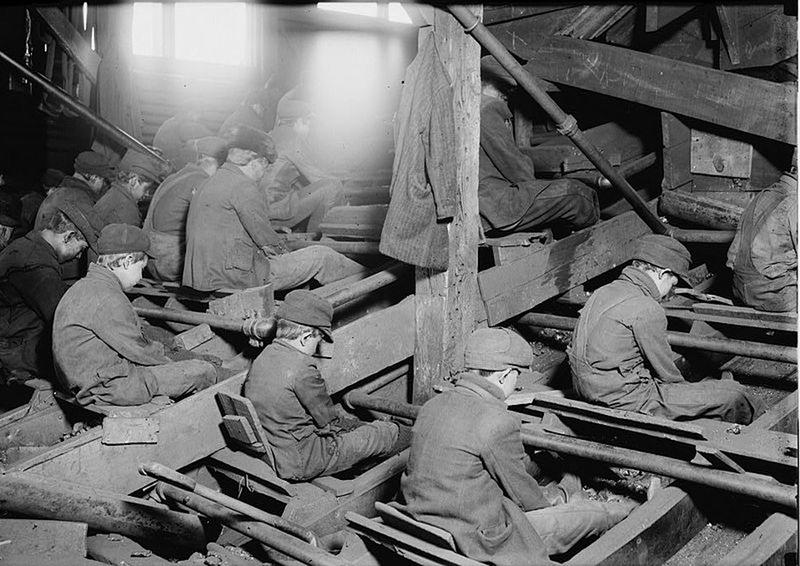
Pinterest
Anthracite, a type of coal, is relatively safer compared to the usual bituminous coal, as it is harder and has a longer burning time. However, it still requires extraction from the earth, similar to regular coal, and comes with its own set of hazards. Workers face the potential dangers of tunnel collapses, explosions, and injuries. Young “breaker boys,” responsible for removing rock fragments from the coal, often ended up with bloody fingers. Additionally, like those working with bituminous coal, there was the ever-present risk of developing black lung disease.
Two strong fishermen eagerly anticipate their departure to the sea

Pinterest
The life of a fisherman is characterized by early mornings, unpredictable seas, and unpredictable weather. Those who pursued this occupation in the early 20th century did not do so for the sake of fashion, but rather out of necessity to support their families. Regardless of whether times were plentiful or scarce, they would wake up before dawn in hopes of catching fish. Being a fisherman meant enduring both favorable and unfavorable circumstances. Tragically, many men lost their lives while fishing in treacherous waters, but there was no room for complaints as this was simply their way of life.
1915: Deep-Sea Diver Achieves Astonishing Aerial Feats
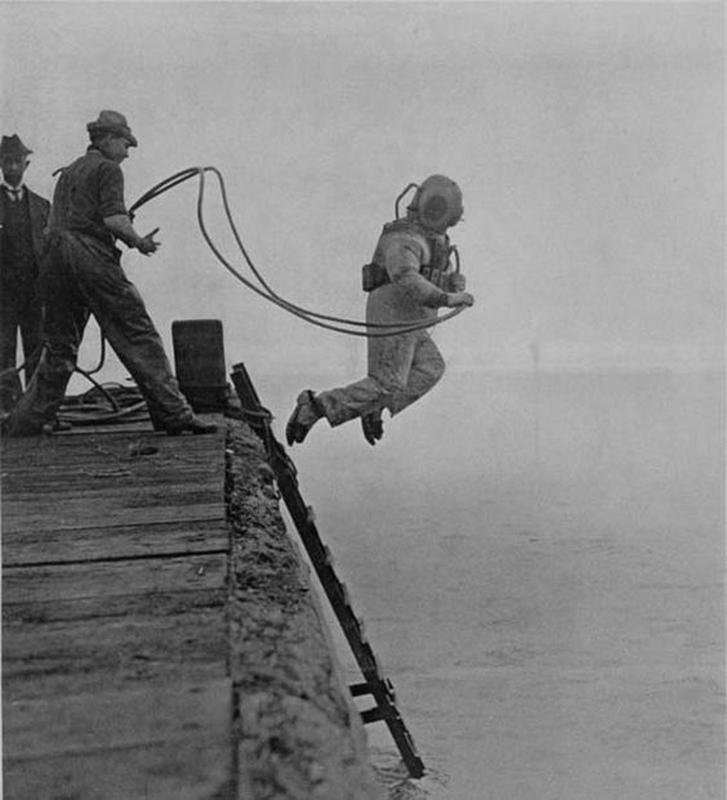
Pinterest
Diving in the oceans has been a practice since ancient times when people ventured into the depths to seek food and resources. Although we may not perceive this occupation as highly perilous, there are hidden risks beneath the water’s surface. Typically, when we envision dangers in the ocean, our minds gravitate towards creatures, specifically sharks. Nonetheless, the greatest hazard lies in something we rarely contemplate on land: oxygen. When diving, it is vital to remember to breathe naturally, avoiding the urge to hold one’s breath, in order to prevent decompression sickness. As you ascend and the pressure alters, it is crucial to ascend at an appropriate rate.
Man Finds Joy in Sipping Tea While Balancing on Construction Beam
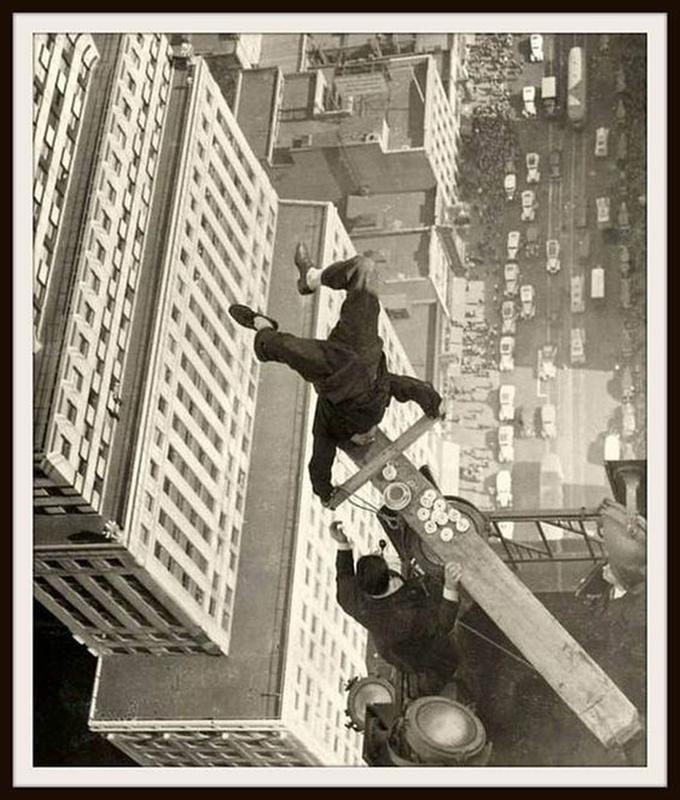
Pinterest
This job could be deemed as the worst employment choice for individuals suffering from acrophobia. The construction worker assigned to work on the beams of skyscrapers must possess the agility and stability of a gymnast on a balance beam. Moreover, they must constantly consider how the wind might impact their movements, taking precautionary measures such as increasing their weight load and adjusting their center of gravity. Aside from the risk of falling, ironworkers navigating these beams must also bear the burden of carrying heavy tools and endure extreme weather conditions, be it scorching heat or freezing temperatures. The range of dangers they face varies from minor incidents like finger injuries to the obvious peril of falling.
Experienced trucker flaunts his preferred vehicle

Pinterest
In the 1970s, there was a fascination surrounding the trucking profession, making it appear as if it was a fun way to make some extra money. However, this perception is far from reality. Truckers have gained a reputation as the renegades of the road, but this is only because they often have to slightly break the rules in order to ensure timely delivery of their cargo. Whether it means driving through the night or speeding past slower drivers, truckers are determined to reach their destinations on time. This commitment to punctuality can be risky, and many drivers who try to outdo the clock may end up becoming victims of their own ambition.
Nonchalantly, a telephone engineer in London effortlessly attaches a phone cable 50 feet above ground.
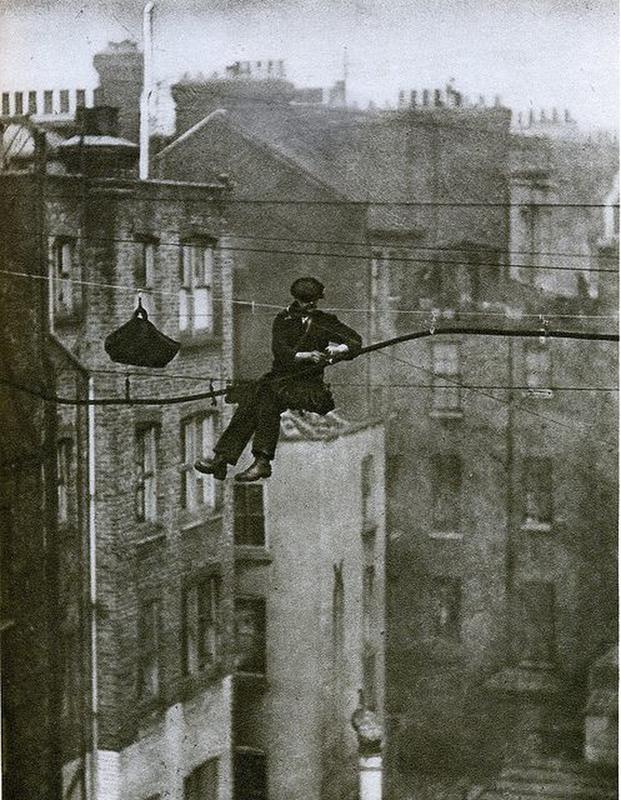
Pinterest
Some jobs may appear to be significantly more hazardous than they truly are. Despite the daunting appearance of telephone wire installers, who hang in mid-air to facilitate global connectivity, the job is not as perilous as it seems. One of the most demanding aspects of establishing telephone networks involved connecting the wires, often requiring them to span bodies of water. To affix these wires, workers would sit in a bo’sun’s (or boatswain’s) chair, suspended at a height of 50 feet. These chairs were initially constructed using a simple plank or a sturdy piece of canvas.
Portland Stove Foundry Worker Gives It His All to Beat the Heat
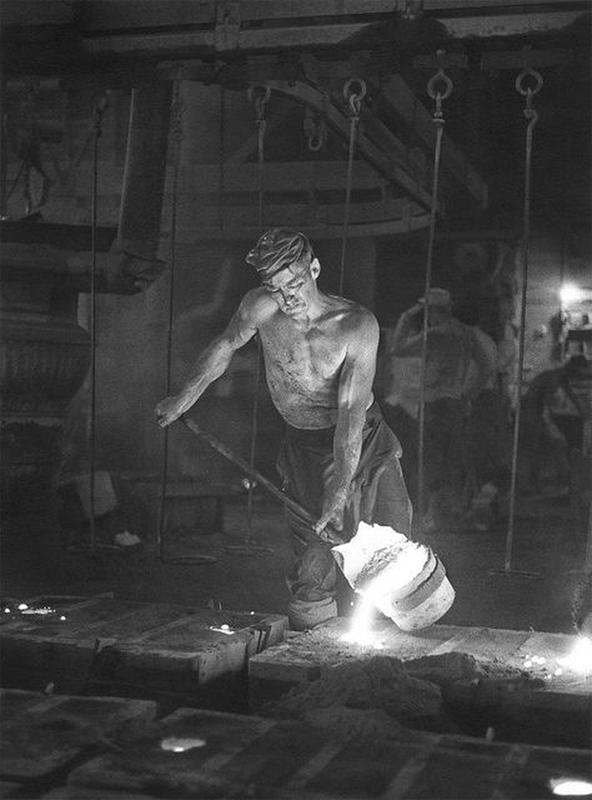
Pinterest
The foundryman plays a crucial and perilous role in producing construction beams and other essential tools for daily life. While some of the dangers in a foundry are apparent, such as working with molten metal, there are also hidden hazards. Workers in the foundry are exposed to various chemicals and airborne substances that may not be easily visible. Although efforts have been made to raise awareness and reduce exposure to these chemicals, foundry workers still face the risk of developing conditions like lung cancer and other diseases due to prolonged exposure.
Possible rephrased headline: “In 1918, Mail Delivery by Plane Held Potential for Tragedy or Notoriety
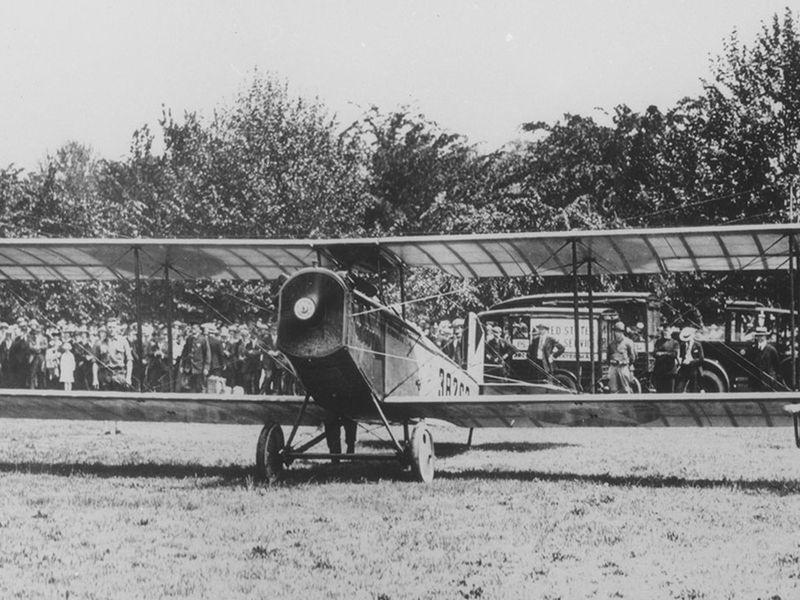
Smithsonianmag
Currently, we find amusement in the hazards dogs pose to mail carriers. However, during the initial stages of aviation, the actual mode of mail delivery presented the threat. Between 1918 and 1927, a total of 230 individuals utilized Jenny aircrafts to transport mail. Tragically, 32 of these pilots lost their lives in plane crashes. Due to limited visibility, these early flights were restricted to daytime operations. The first aviator solely relied on a map placed on his lap for guidance during his flight. Despite the perils involved, young men remained undeterred and continued to pursue this occupation. Their determination was fueled by witnessing the recognition Jack Knight garnered following his perilous nighttime journey to deliver mail to Chicago.
The George Washington Bridge: A Deadly Link Between New York and New Jersey
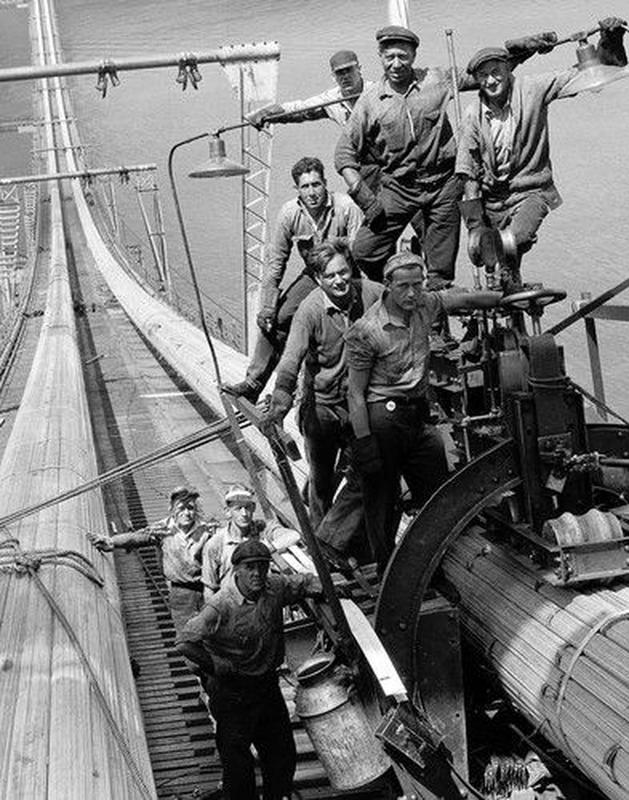
Pinterest
The George Washington Bridge, which connects New York and New Jersey, is a remarkable feat of engineering. Its design took a century to develop, eventually being crafted by Othmar Ammann. The construction of the bridge commenced in 1927, starting with the construction of the two towers. Working on these towers proved to be a challenging task as the workers had to operate 75 feet below the water level. Tragically, during the early stages of construction, three individuals lost their lives. This unfortunate incident transpired when the coffer dam collapsed, unleashing the full force of the Hudson River, which sadly resulted in their drowning. Additionally, another worker met his demise due to the improper placement of an explosive in the Palisades rock. Perhaps the most widely publicized deaths occurred when three men accidentally fell into the liquid concrete that was being poured, consequently becoming permanently entombed.
Someone had to risk their life to carve the presidents into Mt. Rushmore
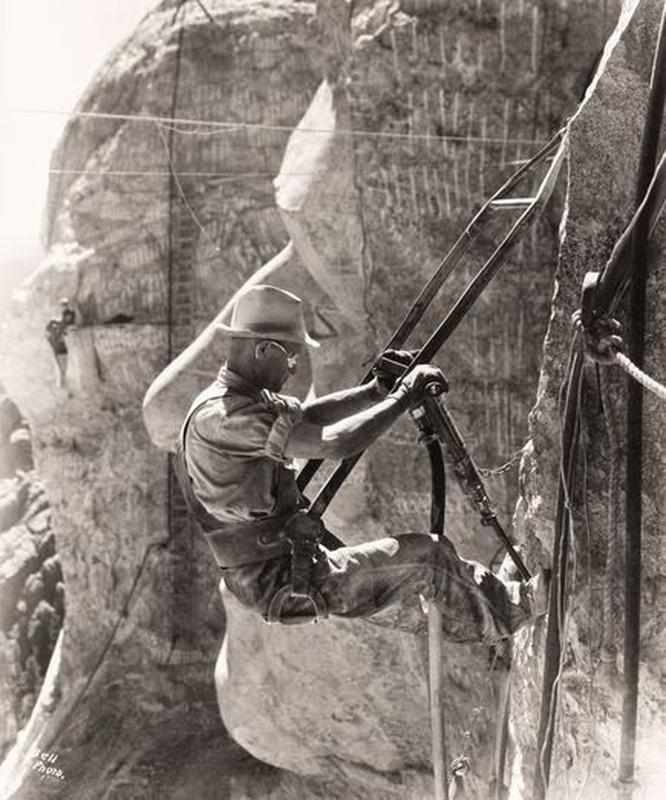
Pinterest
Truckers will make sure they reach their destination on time, whether it entails driving throughout the night or maneuvering through slow Sunday drivers on the highway. However, this commitment to being punctual can be risky, as some drivers who strive to outdo the clock may become casualties of their own desire to succeed.
Weavers put their lives at risk by sucking thread through the shuttle’s eye, a hazardous and unhygienic practice known as the ‘Kiss of Death’.
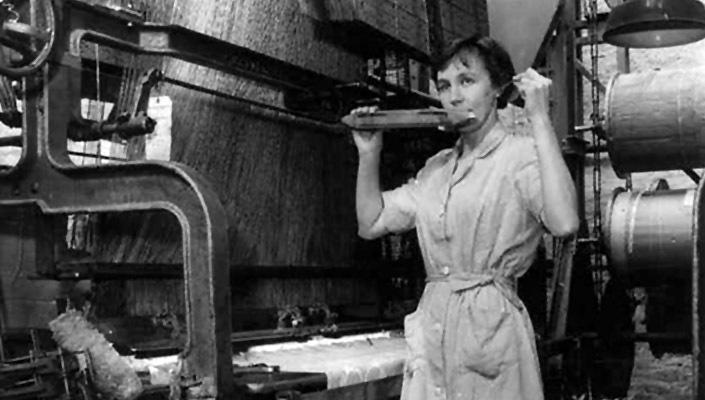
Pinterest
The kiss of death, although it may sound foreboding, was not initially seen as a concern in the textile mills. Workers used a tool called a shuttle, which contained a pirn to hold the thread. To pull the thread through, weavers would use their breath. This was seen as harmless until the late 19th Century, when the deadly disease consumption started claiming lives. It was during this time that weavers began dying at a higher rate than the general population. A German bacteriologist made a groundbreaking discovery, identifying the bacteria responsible for the disease. It was then realized that even a single infected worker could trigger an outbreak in a factory. While factories began implementing metal needles to prevent the spread of the disease, some still practiced the kiss of death until a law was enacted in Massachusetts.
Young coal miner risks life to support his family
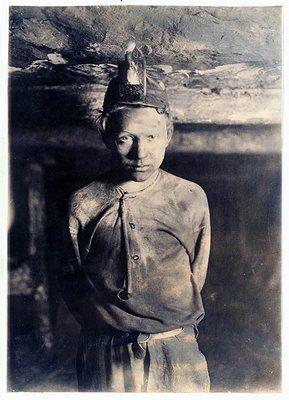
Pinterest
For centuries, we have ventured underground to extract coal, a vital source of power for our lives. However, coal mining and caving activities come with their fair share of unique risks. Throughout the 20th century alone, a staggering number of over 100,000 coal miners lost their lives in this hazardous profession. The dangers associated with mining coal are numerous and diverse. Some fatalities may arise from seemingly ordinary incidents such as vehicle collisions, while others are intricately linked to the job itself. Miners confront perils such as suffocation, roof collapse, gas poisoning, rock bursts, outbursts, and explosions. Even if a miner manages to survive the treacherous underground environment, they are still susceptible to contracting black lung and other respiratory illnesses, which can significantly reduce life expectancy.
1952: Overhead Powerline Workers in Nagoya, Japan Receive a Shocking Surprise

Pinterest
Overhead powerline workers play a vital role in keeping our lights on, yet their heroic efforts often go unnoticed. Despite the implementation of numerous regulations aimed at safeguarding these workers, studies indicate that a significant number of injuries and fatalities due to electrocution still occur among them. Shockingly, the death rate stands at approximately 17 to 23 per thousand workers over a span of 45 years in this profession. While the most obvious risk associated with working on overhead powerlines is electrocution, there are also other hazards to contend with. Fatalities and injuries can result from falls, being struck by falling objects, burns, over-exhaustion, and a plethora of potential dangers such as sprains, cuts, and contusions.
Chicago Police Officer Investigates Thirteen Bullet Holes in Window at 1920s Murder Scene

Pinterest
Police officers understand the inherent dangers they face daily in their line of work, particularly in cities like Chicago. The crime statistics in such areas are undeniably distressing. This was not an entirely new phenomenon, as even in the 1920s, a period we sometimes romanticize, the situation was equally dire, making the task of being a crime fighter perilous. The reason behind this was the mob’s control over Chicago, specifically under the notorious Al Capone. Capone and his gang were involved in various illicit activities, ranging from illegal alcohol and gambling to prostitution and extortion. Their methods included the use of firearms and even bombs. While some killings occurred haphazardly, others were deliberate and targeted, with Capone’s gang going after individuals such as lawyers, newspaper reporters, police officers, and even saloon owners. During this time, politics and organized crime were deeply intertwined, resulting in investigations into these murders often encountering a wall of silence.
Suits worn by divers in the late 19th century exceeded three times their weight

Pinterest
Diving in the modern era carries its own set of risks, although it is considerably less hazardous than before the advent of modern innovations. In the past, divers faced dangers such as nitrogen narcosis, hypoxia, decompression sickness, and the very real possibility of drowning. Unlike ancient times when diving bells were used, contemporary diving suits were created to maintain pressure similar to that of the surface. These suits, known as atmospheric diving suits or ADS, were first developed in 1882. The initial design weighed a hefty 830 pounds and aimed to withstand the harmful physiological effects of diving, specifically the bends. These suits enable divers to explore depths of up to 2000 feet. A major obstacle during their creation was the incorporation of articulating joints. Despite efforts to adapt to changing pressures, current data suggests that diving still carries the potential for long-term damage, including neurological harm.
Manchester City detectives take a break from solving crimes for a photo
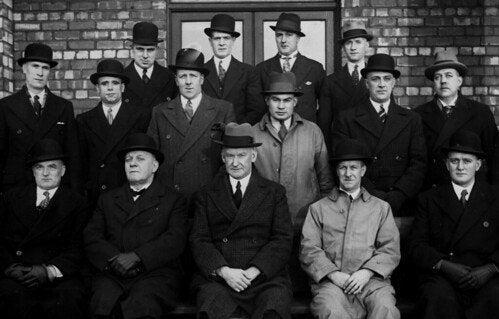
Reddit
Contrary to their resemblance to Chicago mobsters, this group is actually made up of the good guys. Leading the force was Constable Sir John Maxwell from the Manchester City Police, who navigated a period of transformation with the implementation of forensic science labs and the introduction of a police radio network. While these advancements were intended to aid police and detectives, change is often accompanied by stress, as most people are aware. Being a detective is already a perilous occupation, but Maxwell’s tenure seemed to be particularly challenging. He served during the wartime era and eventually retired in 1942, likely due to exhaustion from the additional responsibilities during this time.
Radiation Poisoning Affected the “Radium Girls” while Working with Glow-in-the-Dark Radioactive Paint

Pinterest
In the 1890s, Marie Curie made the groundbreaking discovery of radium. During World War I, the United States Radium Corporation saw an opportunity and began recruiting working-class girls for employment. These girls were enticed with wages that were more than three times the average factory job. Their task was to apply radium paint onto watch faces. As a result of their work, the girls themselves would emit a glow in the dark by the end of their shifts. Some went so far as to paint their clothing and even their teeth. Unbeknownst to them, every time they used the painting technique they were taught, they unknowingly ingested small amounts of radium. The corporation failed to inform them about the hazardous effects of exposure. Tragically, over time, the radium girls fell ill and succumbed to their illnesses.
Painters Restricted to Working on the Bronx-Whitestone Bridge Under Ideal Weather and Windless Conditions
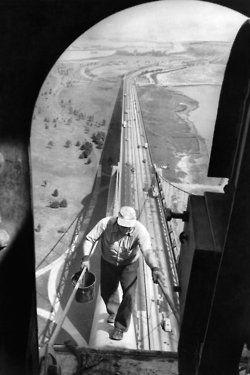
Pinterest
In addition to the initial difficulty of constructing a bridge, regular maintenance is also necessary. The Bronx-Whitestone Bridge, which opened in 1941 and shared a similar design with the Tacoma Narrows Bridge in Tacoma, Washington, faced public concern after the collapse of the latter. To address concerns about safety, the Bronx-Whitestone Bridge underwent modifications, including the installation of two steel cables to reduce oscillation and potential failure caused by high winds. In 1953, the bridge was painted for the first time in six years, with the painters having to work under specific conditions to minimize danger. This coat of paint served as a protective measure, preventing the steel from corroding. However, unlike the Golden Gate Bridge, which requires almost continuous painting, the Bronx-Whitestone Bridge is not as challenging in terms of maintenance.
Steel riggers in New York bravely work, despite feeling isolated at the summit

Pinterest
Originally derived from sailing ships, the term “riggers” refers to the individuals responsible for utilizing rigging, which comprises thick ropes, in order to raise sails. Although riggers are still utilized in the context of sailboats, the term now encompasses anyone involved in the lifting of substantial objects. These individuals secure loads to cranes and structures and employ chains, winches, lifts, cables, and similar instruments to elevate objects. They must employ rapid calculations and employ a variety of suspension techniques to skillfully navigate obstacles while maneuvering their load. Due to the immense weight of the objects they handle and the challenging environments they encounter, riggers face the risk of sustaining injuries.
It is hoped that the individuals involved in the bulletproof vest test were friends.
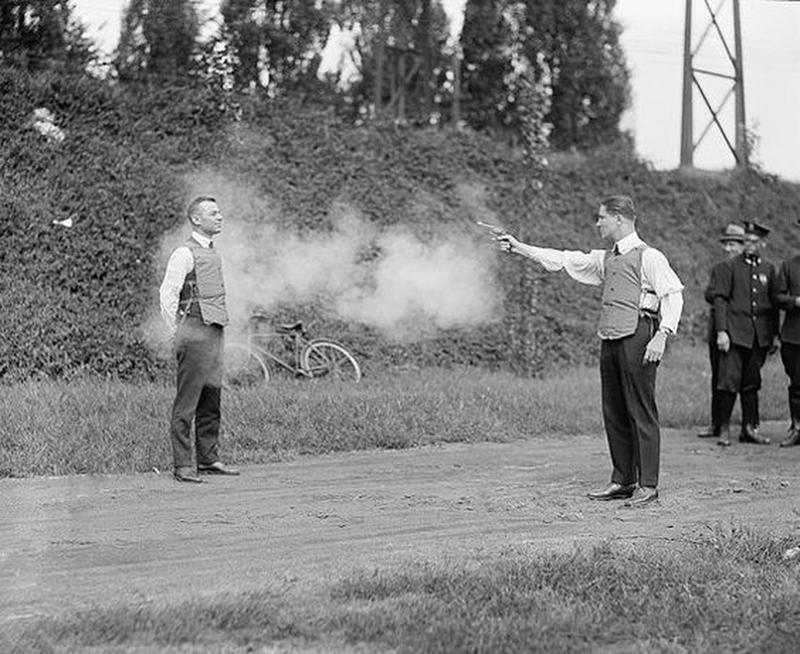
Pinterest
The assassination of McKinley in 1901 led to the Army’s adoption of soft body armor. Initially, they experimented with silk, but it proved ineffective against high-speed bullets. As a result, they continued their efforts to create lightweight and efficient bulletproof clothing. Testing was crucial to determine the effectiveness of the newly developed bulletproof vests. Once they were ready, the vests needed to be sold, which necessitated demonstrating their efficacy. This involved an officer shooting at a person wearing the vest to showcase its protective capabilities. Although no fatalities occurred during these demonstrations, there was still a risk of injury, as no material is entirely bulletproof, only more resistant to bullets.
Phyllis Latour Doyle conceals secret codes in her knitting to evade Nazi detection

Pinterest
Becoming a spy entails embracing a career filled with peril, and such was the path chosen by Phyllis Latour. Initially serving as a flight mechanic for the WAAF in 1941, she didn’t hesitate to embrace the role of a spy when the opportunity arose. Assuming the code name Genevieve, she dedicated a year of her life in Aquitaine to her espionage duties. Subsequently, on May 1, 1944, she parachuted into Normandy, now operating under the alias Paulette. Engaging in clever tactics, she would ride a bicycle, engaging in innocent conversations with German soldiers while selling soap, all the while gathering valuable military intelligence. To ensure her messages remained secure, Phyllis ingeniously encoded silk strands, which she used to tie up her hair, within her knitting supplies.
The awe-inspiring beauty of space is matched only by its chilling terror

Pinterest
The majority of individuals do not encounter the perils that astronauts experience. One specific peril involves losing physical connection with the spacecraft while in space. Given the circumstances of space, it would be exceptionally challenging to regain access to the ship without help. As a solution, SAFER was developed to serve as a self-rescue mechanism in the event that an astronaut becomes detached from the vehicle during a spacewalk and no alternative rescue options are accessible. Essentially functioning as a backpack system, SAFER operates like a jetpack. Fortunately, no astronauts have been required to utilize this device thus far, but it is always better to prioritize safety rather than relying on luck.
Firefighters in the 1980s urgently requesting water
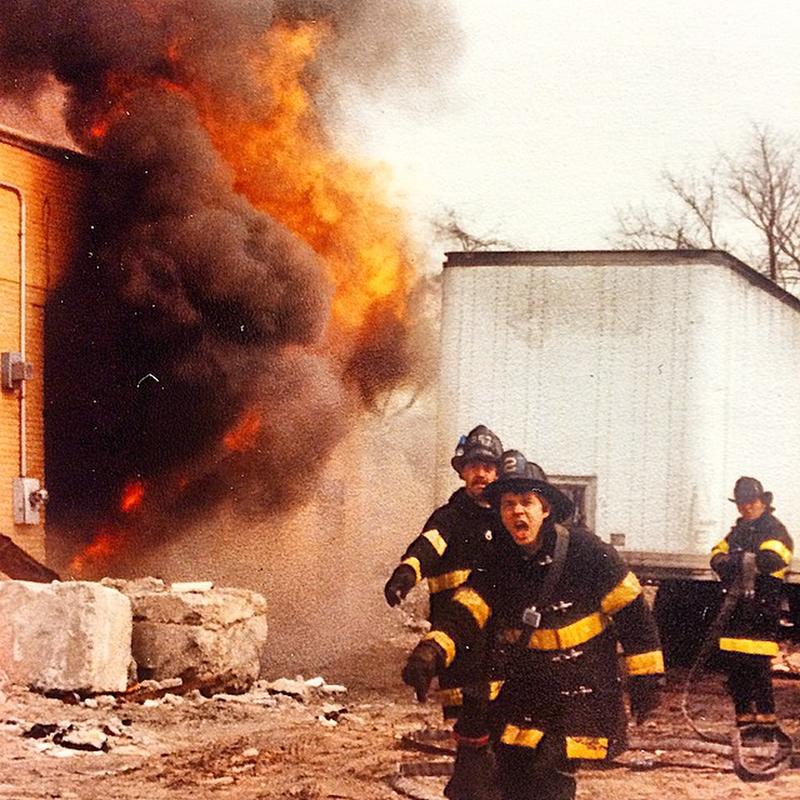
Pinterest
Firefighters risk their lives every time they go to work, facing the constant uncertainty of encountering a devastating fire that could potentially end their lives. This is not a new challenge for firefighters, as they have been saving lives for generations. However, it is in the late 20th century that their heroic actions have been documented so vividly. The photo captures the intense stress experienced by these firefighters as they urgently call for water, but this is a familiar situation for them.
More From HISTORY + CULTURE
-
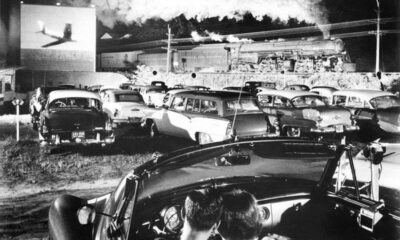

Unveil a Secret World with These Stunning Photos from the…
-


Rare Moments in Time Preserving History's Impact
-


Hidden Truths: Rare Photos Exposing History's Untold Stories
-


Rare and Revealing Photos that Challenge History
-


Reimagining the Past: Colorized Photos with Fresh Perspectives
-


Altering the Narrative: Rare Photos that Reimagine History
-
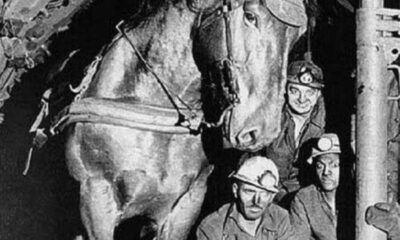

Eerie Glimpses of the Past: 60 Forgotten Historical Photos
-


Unearthed Gems: Rare Photos Absent from History Books
-
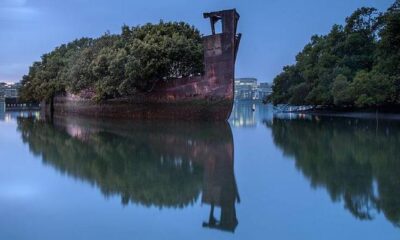

Captivating Vintage Photos That Defy Expectations
-
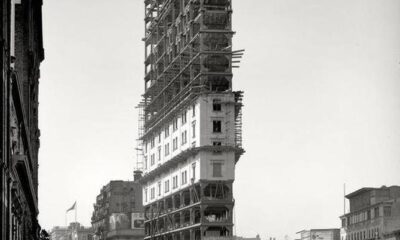

Rare Photos that Reveal Hidden Historical Truths
-


Revealing Forgotten Moments: Rare Vintage Photo Collection
-


80s Unforgettable Moments: 60 Things We Forgot About
